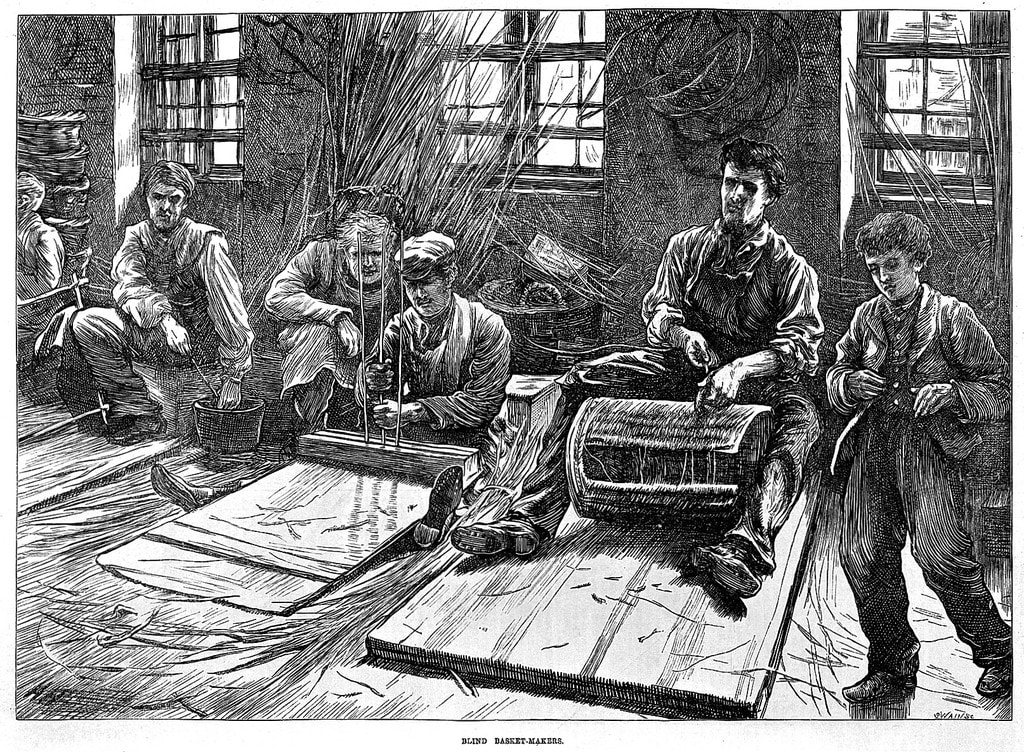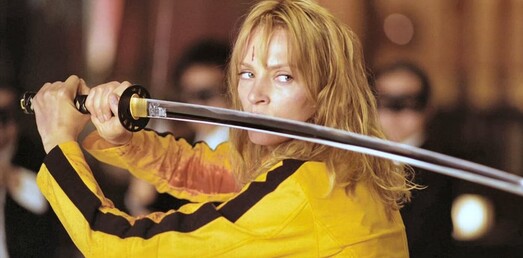Cloudlanders
Take a Walk on the Wild Side
or Cane Training 102 (Part 1)
Blind people were once described as those "for whom life is one long Arctic night, unillumined by lamp of heavenly or earthly make.” [i] I found that description in an article written for Charles Dickens's weekly periodical All the Year Round. It’s a grim read, but in its defence, it was written in 1876 and comprises all the dark, melodramatic
embellishment we expect from the Victorian age. Indeed, looking back in time as a modern-day person with sight loss in the UK, I would say that the only ‘long Arctic night’ I ever remember was the winter our central heating boiler broke down. Yes, I know I’m being flippant.
embellishment we expect from the Victorian age. Indeed, looking back in time as a modern-day person with sight loss in the UK, I would say that the only ‘long Arctic night’ I ever remember was the winter our central heating boiler broke down. Yes, I know I’m being flippant.
|
The anonymous author of this commentary is reporting on a visit made to an institution under the care of the ‘London Society for Teaching the Blind to Read.’ If you read the entire document (you can check it out here), you might notice that there was a lot of basket-making going on in these kinds of places. It seems it was deemed a useful and productive activity for children and adults with sight loss. In fact, I have been reliably informed, the occupation of basketry for blind people (the title of my next novel) was still very much in vogue right up until the 1970s. It’s one of the reasons I now refuse to attend any kind of weaving course… What you might also notice is that the Victorians went to great lengths to teach blind children to read (and write) – hence the Society’s title – and to produce “a superabundance of tracts” in Braille - so perhaps it wasn’t all bad?
|
But what interests me (for the purposes of the first and second parts of this post) is the writer’s response to the blind people in the institution. It is the 5th of November, Bonfire Night, and the inmates are attending a specially organised bonfire and fireworks display. The boys are having a grand old time around the fire, handling and lighting the fireworks with the enthusiasm and glee of... well, boys. (As a side note, it strikes me as a modern-day health and safety nightmare, whatever the state of your vision, but we’ll overlook that one for now.) As the writer witnesses this scene with the benefit of his fully functioning eyes, he seems confused. How can the “utterly blind… understand the fun of fireworks?” he muses. How can they find any pleasure in such a visual event and how do they manage to avoid bumping into each other in all the excitement? He’s also mystified by the blind inmates’ use of language. They talk of ‘looking at’ things, and in a “matter-of-course way” speak of having ‘seen’ somebody that they’ve met that day. Why are they using everyday language, he seems to be asking – or the language of the sighted? He is also bemused that the blind people don’t like to be stared at, particularly when they are engaged in basket making, noting that the basket-makers call the sighted people who stare, ‘Philistines’ - (an excellent description that I may start using myself).
Now, as I say, this was over 140 years ago, so what does all of that have to do with my white cane training and sight loss in 2022? Well, I’m glad you asked. It struck me, after reading this article, that some of the Victorian writer’s responses still prevail today – and I’ve found myself noticing some of them since I began using a white cane.
"In the Beginning was the Cane..."
I started my white cane training just over a year ago. “You need to be trained to use it?” I have been asked many times since. “Wait, don’t you just flail it around in front of you, so everyone gets out of the way?” Well, no, you Philistine. It’s more complicated than that. (See how quickly I got that new insult in?) It takes a lot of time and practice, and I can’t tell you how it’s done since it’s a secret known only to blind people and their trainers. I’d be struck off the visually-impaired register if you found out – it’s just not worth it. So on with the story. When Neil, my cane trainer (not his real name – we’ve been through all that in the first part) visited me for the first time I told him I felt like a fraud. You must remember that I’ve spent much of my adult life pretending I could see better than I could. Call it denial if you like. I was shocked to think that a professional in visual rehabilitation would suggest that my sight was so bad that I needed a white cane to get around – even though I could no longer drive, I was always tripping over things and crossing the road was becoming a regular near-death experience. I thought white canes were for blind people, and I could still see … something. Surely that must make me some kind of blindness fraud? I had my own preconceptions about what being blind was – and it turns out they were all wrong. Like the observer of the blind people in the Victorian institution, I was clueless. I didn’t know anybody else who had sight issues like mine, and I’d certainly never met anyone who used a white cane. Was I, in effect, my own Philistine? Seems I had a lot of learning to do.
Neil assured me that 90% of people with sight loss still have some functioning sight and therefore gave me permission (whether he realised it or not) to go ahead and try this white cane thing out. I didn’t take to it straight away. I wonder who does? For the first two or three weeks my brand-new cane sat folded away on top of my Chinese cabinet in the hallway looking all clean and pristine. I only used it when Neil came around for our weekly walks and I made sure to forget about in the between times. I didn’t want to take it out and practice using it when he wasn’t there. Frankly, I wasn’t sure this was going to work out. It made me feel uncomfortable and self-conscious. It made me feel blind. It made me look blind – and I wasn’t, was I? Until I began to use a white cane in public, nobody suspected I had any problems with my eyesight. Of course, that’s untrue, lots of people knew I had deteriorating sight – but the general public didn’t – and that’s the point. Isn’t it? So, with my internal ableism on overdrive, I fought against the urge to use the cane, even though as the weeks passed by I realised it was quite useful - it was helping me get around, cross over roads, not trip over things, manage steps, make people aware of my bad sight – see, quite useful.
One week, I decided to take it out on a shopping trip with my family. I was going to throw caution to the wind – I was going to use it without Neil being around. I got out the car, unfurled the cane (it unfolds quite dramatically by itself accompanied by lots of loud clicks – somebody said to me recently that I look like I’m about to brandish a sword like Zorro – I quite like that analogy): then, here we go - brace yourselves! – blind woman on the move! The people at the shopping centre did indeed brace themselves and the majority were kind enough to move out of my way as I swept by with the cane (you feel a little like Moses parting the Red Sea – especially if it’s a crowded pavement). What I didn’t expect was the reception some people gave me as a white cane user. And not all of it was positive. In fact, some of it was unsettling and confusing (and also, if I'm honest, mildly amusing). It made me realise that we haven’t come very far as a society in terms of how we view (and treat) people with visual impairments. It seems some of the attitudes and preconceptions of the good old Victorian writer in the article above are still alive and kicking in the twenty-first century.
If you want to find out what I’m talking about (and I’m sure you do), then pop along to Part Deux – link below.
If you want to find out what I’m talking about (and I’m sure you do), then pop along to Part Deux – link below.
Reference
Soon you can read: Take a Walk on the Wild Side OR Cane Training 102 (Part Deux)
|
www.cloudlanders.com
a fun-filled frolic into the world of sight loss (& art)
© 2021-2024
|
|

